Cook dry or fresh white beans without breaking a sweat. This humble, simple ingredient can transform your recipe roster, thanks to its versatility and hearty texture. Although there are many varieties to choose from, all white beans can be cooked in a similar way -- either on top of the stove or in the slow cooker. Use cooked white beans in stews, salads and side dishes. Once you have the basics down, you can dress them up in a nearly endless variety of ways.
Selecting White Beans
In general, all white beans have a mild flavor and a slightly creamy texture once you cook them. Choose from several varieties of white beans, all of which can be used interchangeably, although the size and texture differs a bit among the different types. Some examples include:
- great northern: one of the larger varieties.
- navy: a small, firm white bean.
- cannellini: which have a slimmer size and creamier texture than traditional white kidney beans.
- flageolets: which boast a fresher flavor and firmer texture than many other varieties.
Fresh Beans
Although canned and dried beans are among the most widely available forms of white beans, fresh white beans are worth trying if you can find them. Sometimes available at farmers markets or specialty stores, fresh beans have a richer flavor than their fried or canned counterparts.
To Soak Or Not to Soak
That is the question on the minds of any cook working with dried beans. The longstanding recommendation that soaking beans overnight shortens the cooking time and makes them easier to digest is not as accurate as advocates may believe, according to the "Los Angeles Times." Although soaked beans may cook slightly faster, skipping the soak actually results in beans with better flavor and texture.
The Basics of Cooking White Beans
Once you've chosen your beans and are ready to get cooking, choose from two basic methods to cook fresh or dried beans: on the stove top or in the slow cooker.
Stove Top Method
To cook fresh white beans, place a large, heavy-bottomed saucepan over medium heat. Add a drizzle of olive oil, followed by the shelled beans. Stir the mixture to coat the beans with oil, add approximately 6 cups of water or cooking stock for every 1 pound of beans that you're cooking and bring the liquid to a simmer. Cover the pot and simmer the fresh, white beans for approximately 30 minutes, or until the beans reach the desired tenderness.
Alternatively, cook dried white beans by adding them to a heavy-bottomed pot, using enough boiling water to cover the beans, and simmer the mixture until the beans are tender -- typically one to two hours.
Slow Cooker Method
For an easier, fuss-free way to cook dried beans, let your slow cooker do all the work. The Kitchn states that slow-cooked beans have the best texture, thanks to the slow cooker's steady low heat. To infuse the beans with flavor, add aromatics such as:
- garlic
- onion
- herbs
- bay leaf
to the slow cooker, along with a little salt to help keep the beans' texture intact. Add enough water or stock to the slow cooker to cover the beans by 2 inches, then cover the cooker and cook the beans on low heat for six to eight hours. Begin checking them for tenderness after five hours, and every 30 minutes thereafter until they reach your preferred tenderness.
Seasoning Ideas
In addition to cooking the white beans with aromatics or smoked meats such as ham hocks added to the cooking liquid, other options for seasoning the beans once they're cooked include:
- Buttered white beans: Stir the hot, cooked beans with 2 ounces of butter for each pound of beans. Serve the dish with a sprinkle of fresh parsley and a spritz of fresh lemon juice.
- Cooked beans in a stew: Make a flavorful white bean stew by sauteing garlic in some olive oil until it's fragrant. Then, add diced tomatoes, 2 cups of broth, 1 to 2 cups of cooked white beans and some chopped ham or bacon. Simmer the mixture until it's hot, stir in a few handfuls of greens such as spinach, and serve the stew with hearty slices of bread.
- Beans with fresh sage leaves, garlic and olive oil to make a flavorful Tuscan beans.
Related Articles

How to Quick Cook White Beans Without ...

How to Cook Beans
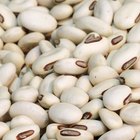
Substitute for Navy Beans

How to Soak Adzuki Beans
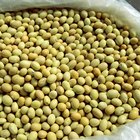
How Do I Prepare and Cook Lupine Beans?
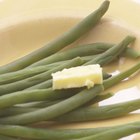
How to Cook Dragon's Tongue Beans
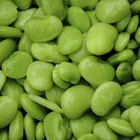
How to Cook Baby Lima Beans

How to Soak and Prepare Dried Chickpeas ...

How to Cook a Pot of Mixed Beans

How to Cook Perfect White & Pinto Beans

How to Make Ranch-Style Beans

How to Rehydrate Chickpeas
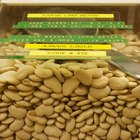
How to: Crock-Pot Lima Bean Soup

How to Cook Petai

How Long to Cook Dried Kidney Beans on ...
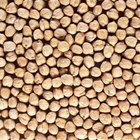
How to Use Dry Beans Without Soaking ...

How to Cook String Beans
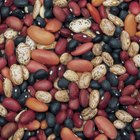
The Best Way to Cook Dry Beans
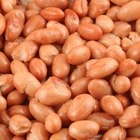
How to Cook Romano Beans

How to Cook Dried Chickpeas Without a ...
References
Writer Bio
Caryn Anderson combines extensive behind-the-scenes writing experience with her passion for all things food, fashion, garden and travel. Bitten by the travel bug at the age of 15 after a trip to Europe, Anderson fostered her love of style and fashion while living in New York City and earning her degree at New York University.